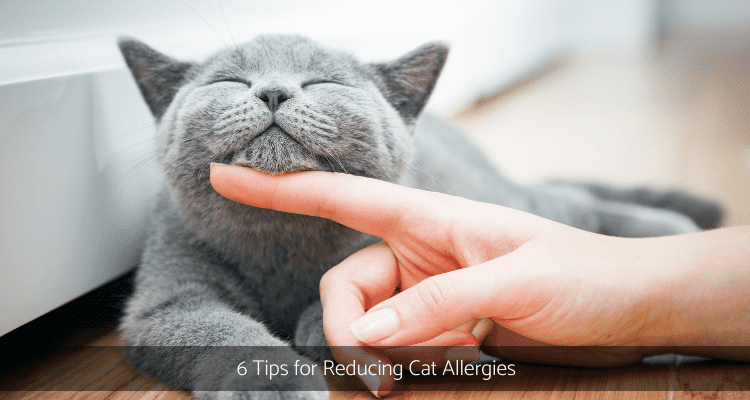 You love your pet cat to death. But what do you do when your new girlfriend says she is allergic to cats? Cat allergies are twice as common as dog allergies. While there is no cat allergy cure, you can take several steps for reducing cat allergies.
You love your pet cat to death. But what do you do when your new girlfriend says she is allergic to cats? Cat allergies are twice as common as dog allergies. While there is no cat allergy cure, you can take several steps for reducing cat allergies.
Here is some information to help you resolve the stalemate without having to choose between your cat and your girlfriend.
What Causes Cat Allergies?
Most people think that cat hair is the main culprit. But it is the allergens in the cat’s saliva, urine, and dander (dead skin that your cat sheds), which are usually responsible for cat allergies. This explains why a hairless cat such as the sphinx could still trigger allergies in someone allergic to cats.
Cat dander is constantly airborne, and can be found in homes that don’t even have cats. Therefore, even people with highly sensitive immune systems, are always at risk of developing cat allergy symptoms.
What Are the Symptoms of Cat Allergies?
The symptoms of cat allergies are similar to symptoms from other pet allergies. These include:
- Nasal congestion, sneezing
- Watery, itchy nose
- Eyes are itchy and watery
- Hives on the chest and face
- Coughing, wheezing
- Asthma sufferers can experience shortness of breath
Symptoms of cat allergies may occur almost immediately, or may take a few hours and even days to appear.
Steps for Reducing Cat Allergies
Now for the question utmost on your mind – what actions can you take for dealing with your partner’s cat allergies? Here are some recommended strategies.
1. Avoidance is the best. Keep your cat outdoors as much as possible, while making sure that sure your cat is safe outside.
2. Keep the cat away from the bedroom, so that you have at least one room in the house that is as ‘cat-free’ as it can be.
3. Make sure to use a litter box with a cover. Clean the cat litter box often.
4. Cat dander particles are so small that they can get everywhere. So clean your house often and rigorously to minimise the level of cat dander.
- Make sure you use a vacuum with a HEPA filter, because regular filters may not be fine enough to catch the cat allergens.
- Reduce, if not remove, the number of carpets in your house.
- Wipe clean the dust on furniture and hard surfaces with a damp microfibre cloth.
- Invest in an air purifier and clean/ change the filters regularly.
5. If you have a male cat, you may consider having him fixed. Neutered males produce fewer allergens.
6. Bathing the cat weekly can help reduce the presence of allergens in the house. Wipe down the cat daily with a wet towel.
Taking these precautions should make life easier for you and your loved one. Remember cats are resilient creatures. If someone in your family continues to show cat allergy symptoms, then finding an alternate home for your feline friend may be the only option.
Does someone in your family suffer from cat allergies? What additional precautions do you take to keep them safe at home?
Author
-
We’re glad you’re here. We’re Carol and Tony, founders of one of the longest running Healthy Home Blogs in the world, Mitey Fresh Australia. We’ve been on this journey for the last 25 years and are passionate about helping families sift through health hazards and triggers like allergens, mould, water damage, chemicals and EMFs, to get clarity about what’s toxic and what’s not so they can create a healthy and happy home for their family they love. Each month, people visit this blog seeking focus on the health and wellbeing of their loved ones, sustainable and effective practice tips and guides, to help create and manage healthier indoor spaces, improve the built environment that is pleasing to the senses and support healthy living and nature, every day. Starting this blog was to help change people’s lives, one family at a time, and we can’t wait to share how its allowed us to stand next to you and show you how interpreting these synergies between buildings and the environment they are built in will impact upon the health and well-being of those who occupy them. Find out more about Healthy Homes and what this blog can do for you!
View all posts





